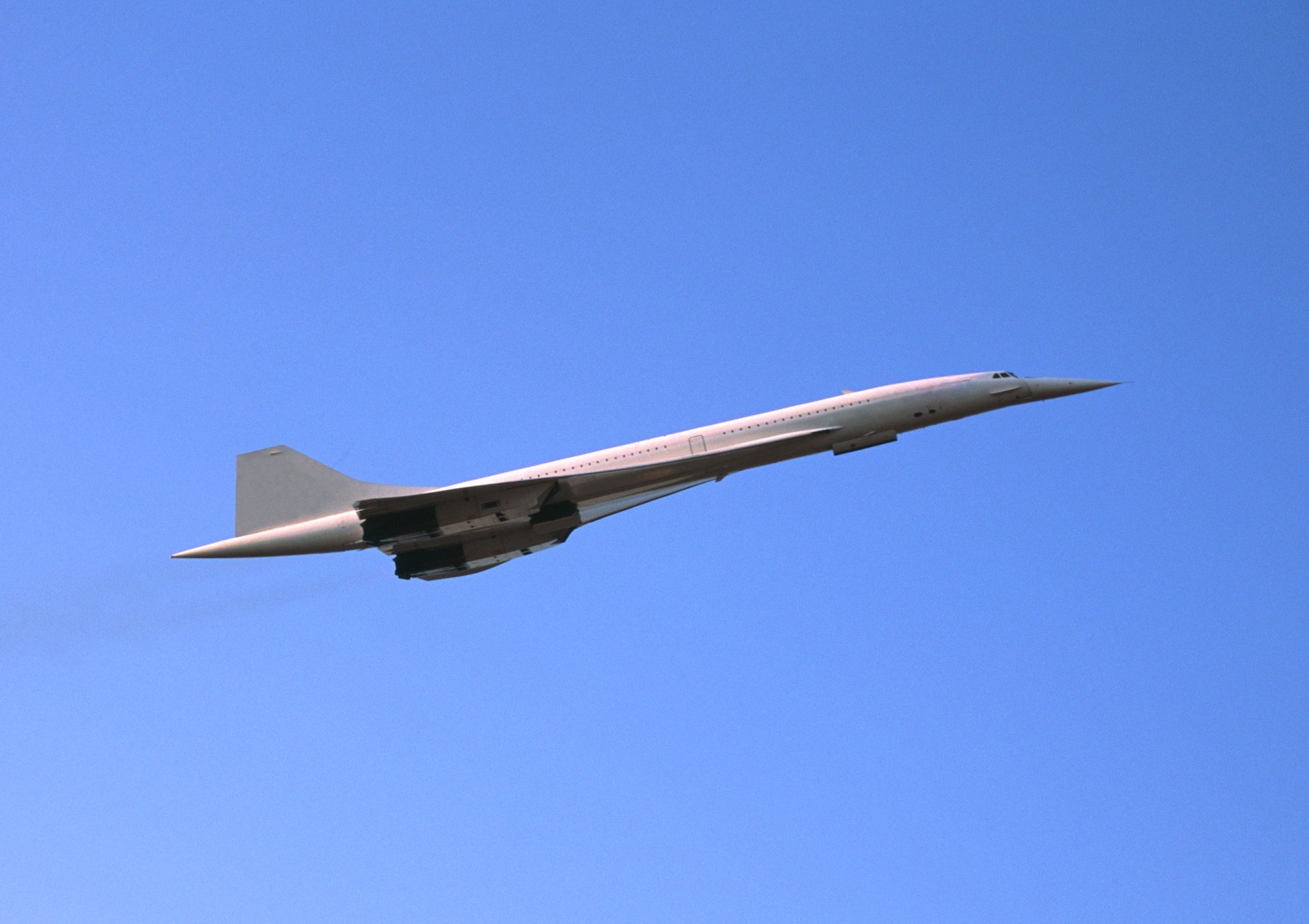Flying at the speed of sound
Commercial aviation's decades-long quest to bring back faster-than-sound travel is at a turning point.

In the summer of 1985, wealthy travelers could breakfast in New York, lunch in London, and return home for dinner, whisked across the Atlantic at twice the speed of sound aboard the Concorde. Those glory days of supersonic travel — when the British Airways Concorde fleet carried Hollywood stars, business titans, and the merely prosperous between continents at Mach 2 — may be poised for a comeback, albeit in a very different aviation world.
Suggested Reading
In January, Boom Supersonic’s XB-1 demonstrator hit Mach 1.122 (or 750 mph) over the Mojave desert, becoming the first civilian aircraft to break the sound barrier since Concorde’s retirement in 2003. The test validated critical technologies that Boom hopes to scale up for its Overture airliner — a jet that could carry up to 80 passengers as far as 4,250 nautical miles (about 4,888 miles) and designed to cruise at Mach 1.7, or a little over 1,300 mph. That’s about double the speed that current commercial airliners fly.
Related Content
The achievement marks a potential turning point in commercial aviation’s decades-long quest to bring back faster-than-sound travel. But while Boom has secured more than $600 million in funding and 130 provisional orders from major airlines, the path to profitability remains challenging. The company must prove it can overcome the same physics and economics that grounded Concorde while also navigating new concerns about aviation’s environmental impact.
The Denver-based company’s journey to this milestone began in 2016, when, still in Y Combinator’s startup incubation program, it received crucial backing from the Virgin Group. Richard Branson’s company offered engineering support and optioned the first 10 airliners — a fitting move given that Branson had unsuccessfully attempted to purchase British Airways’ retiring Concorde fleet in 2003 for use by Virgin Atlantic. (Virgin Galactic has since begun designing its own supersonic airliner.) Boom, which counts Paul Graham, Reid Hoffman, and Sam Altman among its investors, went on to build the XB-1, a one-third-scale prototype of the Overture.
The possibilities are tantalizing: Boom says there are more than 500 routes that could benefit from its plane. Tokyo to Seattle could drop from 8.5 hours to about 4.5, Los Angeles to Sydney from 14.5 to 8.5 hours, and New York to London from 6.5 hours to just 3.5.
There are already some interested parties. United Airlines has signed a “conditional, non-binding purchase agreement” for 15 aircraft with options for 35 more, according to NPR. American Airlines and Japan Airlines have followed suit to bring the total to 130. At a reported cost of $200 million per aircraft, that represents significant market confidence, though industry veterans remember similar commitments for Concorde that never materialized.
The economics and physics that doomed Concorde still loom large. The Boeing 747, which entered commercial service in 1970, months after the Concorde’s first successful test, used a quarter of the fuel and carried five times the amount of passengers. Non-supersonic planes have only gotten more efficient since then.
As Boom’s CEO Blake Scholl told NPR, “The biggest problem with Concorde was it was just simply too expensive to operate. So the single most important problem to solve is not to break the sound barrier, but to break the economic barrier.” Boom claims its Overture will operate at 75% lower cost than Concorde through lighter, modern materials and more efficient engines.
There have also been changes in the understanding of physics that could mean the loud noises and blown windows are a thing of the past. Boom claims that its tech, Boomless Cruise, means Overture is no louder than current airliners at takeoff.
Overture would be able to fly at Mach 1.3 (about 1,000 mph) without an audible boom, reducing U.S. coast-to-coast flight times by up to 90 minutes — if there wasn’t a law prohibiting supersonic flights overland. That could be changing since Elon Musk seems interested, telling Scholl on X last week that the Trump administration would get rid of this regulation.
The aviation landscape has transformed dramatically since Concorde’s final flight, in ways that could help make supersonic air travel succeed this time around. IATA expects global air carrier revenue in 2025 will top $1 trillion for the first time. The luxury travel market is expanding rapidly, with projections estimating growth to $37.45 billion by 2029, at a steady rate of 6.5% per year. Only about 20% of the world regularly uses air travel, suggesting significant room for growth. Aviation Benefits predicts passenger numbers will reach 10 billion by 2050.
Even with better technology and a growing travel segment, Boom’s target of 2029 for commercial service faces significant headwinds. While the XB-1 test validated key technologies, scaling these up for a full commercial airliner presents enormous engineering and regulatory challenges. A commercial supersonic airliner like the one Boom is designing would likely use five to seven times as much fuel per passenger-kilometer as a non-supersonic commercial airliner.
That’s a lot of CO2, something airlines are increasingly worried about. Scholl testified to a House subcommittee on aviation last year that “sustainable aviation fuels, or SAF, are key to Overture sustainability, and we are designing Overture from the ground up to run on 100 percent SAF, enabling net-zero-carbon flight.”
But with sustainable aviation fuels costing three to four times more than traditional jet fuel, Boom faces a decisive question: Can airlines make money selling supersonic tickets while burning premium fuel? Boom says it expects flights to be profitable by charging business and first-class prices, although costs are ultimately left up to the airlines. The answer may determine whether supersonic travel remains a nostalgic memory of aviation’s past — or finally becomes part of its future.
—Jackie Snow, Contributing Editor